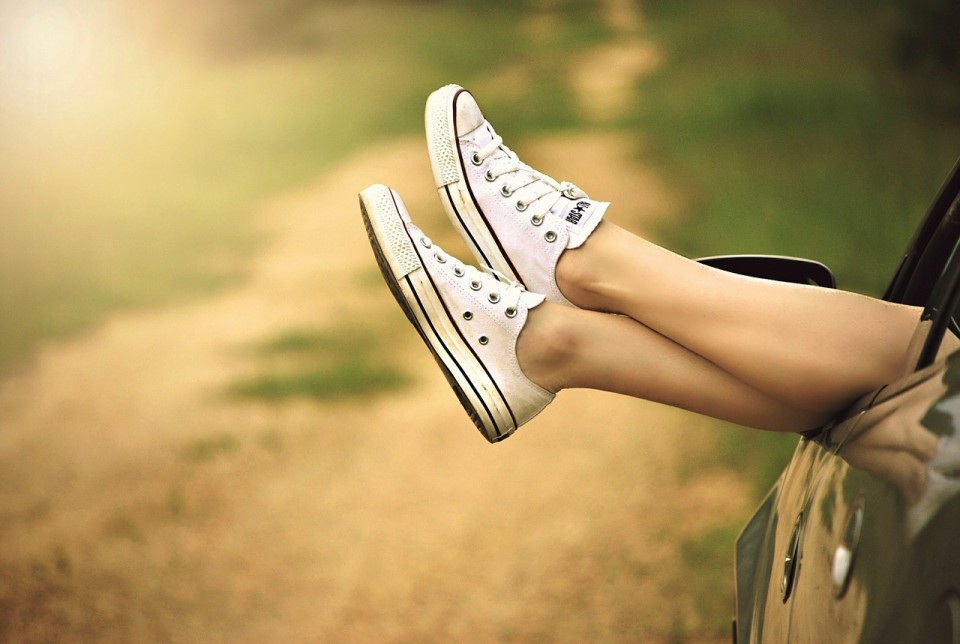We may have Christmas in July, but we shouldn’t have to dress for snow. Something’s wrong with the weather if I’m wearing sweatpants instead of sweating in summer. It’s just fine with me, though.
Honestly, I’m not at all disappointed with this off-summer funk of cooler temps and heavy rainfall across the bulge of the U.S. It’s a welcome relief after living in the tropics. Ugh, it gets old. No, not the gorgeous weather, fun people, and fresh fruit. Bikini season day in, day out means shaving for a bikini every other day or two. That gets old quick.
As an exercise in seeing the positive in every negative situation:
A summer cold enough for pants and long sleeves instead of skimpy clothing.
No need to shave!
The government has separated my husband and me by a year’s worth of red tape.
A break from shaving!
What’s your excuse to not have to shave?
Maybe you depilate every day of the year. Maybe you’re all natural all the time. Whatever works for you, honey.
Standards of beauty are culturally determined and constantly shifting. Women didn’t feel pressured to shave their armpits until a 1915 Harper’s Bazaar ad or their legs until Betty Grable’s 1943 pin-up pose. Grooming companies could now double their products by marketing to women. Fast-forward to 2015 and cosmetics companies can tap into the market of men rocking mascara and a mustache.
Today we’re inundated with foams, gels, creams, chemicals, soaps, oils, waxes, powders, potions, razors, radiation, shavers, tweezers, and all sorts of gadgets ripping out hairs from the roots on quite sensitive skin.
Depilation comes with some pain: yanking out hair that deeply wants to be there, razor burn and irritation, nicks and cuts, in-grown hairs and infections.
Pain is a fact of a vain human’s life. What I want to know is: Which shaving method would hurt the environment the least?
Let’s face off the most common, among both men and women: disposable razors vs. electric shavers.
A carbon footprint analysis of disposables versus electric found that electric shavers consume 14.9 fewer pounds of carbon dioxide. These stats are for mowing a man’s face. As pretty women, we have armpits instead and another 88 inches from hip to toe to shave, so that ups our environmental ante.
Why you should shave with an electric:
- You can recycle the nickel-metal hydride batteries at major shopping centers.
- You can share shavers with your significant other (not sanitary for disposables or anything with a blade that can nick skin) and cut back on bathroom clutter.
- You can plug it in anywhere. I’ve lived in places that lacked running water but did have electricity, and that’s how I shaved.
- You can power your preening with renewable electricity like solar.
You should ditch the disposable habit. The Slate study notes that “every year, Americans toss out 2 billion disposable razors”. More reasons why razors aren’t great for the environment:
- Even razors labeled “eco-friendly” or “multiple use” end up in the trash regularly. Have you ever used the same razor for four (or more) years like you could an electric shaver?
- Shaving is easier during a steamy shower because it relaxes the hair follicle, but the energy to heat those 24 gallons of water wastes 4.1 kilowatt-hours of electricity and 5.3 pounds of CO2.
- An electric shaver is 1 durable product. Wet shaving requires 3 short-lived products: the razor, hot water, and lather in a throw-away can.
- The EWG gave Gillete’s Satin Care shaving gel its worst ranking for human and environmental health. Propane or isobutene may be used to produce foam.
In conclusion, an electric shaver is less harmful to the environment. For us humans, however, it hurts like the dickens on certain sensitive skin areas. While we ladies work on building a higher pain threshold, I hope the engineers over at Philips and Remington are working on an ouch-free apparatus.
What’s your favorite personal grooming brand? How do you get rid of unwanted hair? Share with us your tips, stories, and thoughts on smooth skin.
 Carrie is an environmental educator, anthropologist, and translator. She took her passions for ecological, health, and women’s rights advocacy from the offices of Washington, D.C. to the streets of South America. Now in Colombia, she is slowly opening women’s eyes to the wonders of “la copita de luna” (Moon Cup) and Keepers.
Carrie is an environmental educator, anthropologist, and translator. She took her passions for ecological, health, and women’s rights advocacy from the offices of Washington, D.C. to the streets of South America. Now in Colombia, she is slowly opening women’s eyes to the wonders of “la copita de luna” (Moon Cup) and Keepers.

















